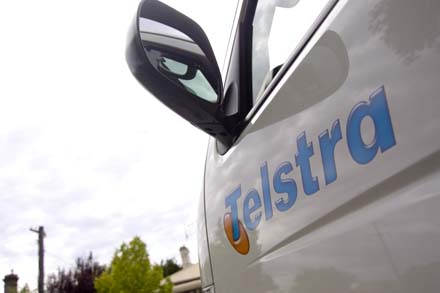2Mbps uplink speeds fast enough: Trujillo

Telstra's outgoing CEO Sol Trujillo today said that uplink speeds for the telco's upgraded HFC cable in Melbourne would only reach an average of 2Mbps, well below average downlink speeds of 70 to 100Mbps, because customers didn't want higher uplink speeds.

"We're not intending to be a secondary ISP. We're not intending to be a broadcaster of things or enabling broadcast of content and other things which would require big amounts of speed here," Trujillo told the press this morning after Telstra announced plans to upgrade its HFC cable in Melbourne.
"What we're trying to do is tailor this to what our customers are telling us they'd like to do as services," he added.
Trujillo agreed that some customers might have specialised needs which would warrant high upload speeds, but said Telstra wasn't deluged by requests for upstream speeds to increase.
"In terms of our platforms we have today, we're not getting much demand from customers saying 'gee I need 20Mbps or I need 100Mbps upstream' at this stage," Trujillo said. "What most people are doing in today's environment is mostly in the other direction in terms of downloads. People want instant access, they want real-time delivery, they want an enhanced experience and that's really what we've focused on."
He said functions such as high-resolution video conferencing were possible with the 2Mbps uplink speeds.
The upgrade isn't just about speed, with the installed equipment ready to enable services, which Trujillo and Telstra CFO John Stanhope believed would drive take-up.
"What we're doing is adding a return path and what we're calling next-generation fixed capability," Stanhope said.
Trujillo said the service would play a role in stemming the losses from the PSTN decline. Stanhope added that he expected in excess of 25 per cent return on investment on the $300 million upgrade costs.
Melbourne is only stage one of the HFC upgrade, but the company won't be making announcements on where the next step is and how much it will cost until it has finished the Victorian city. "We need to get to market to find out the execution side of it," Trujillo said.
Melbourne was a logical choice because of its one million homes footprint and because the necessary teams and equipment were already in the city, according to Trujillo.
He said that it was possible Telstra would extend the cable beyond the one million homes in Melbourne who were currently able to access the service, but only if take-up and average revenue per user on the original footprint was high.
Trujillo also said that the move to upgrade Telstra's cable wasn't a tacit admission that it had given up on getting any piece of the National Broadband Network pie, saying that it had been considering this step for a long time. The announcement just before Communications Minister Stephen Conroy is set to announce the network builder also wasn't timed to stymie the network in utero, according to Trujillo.